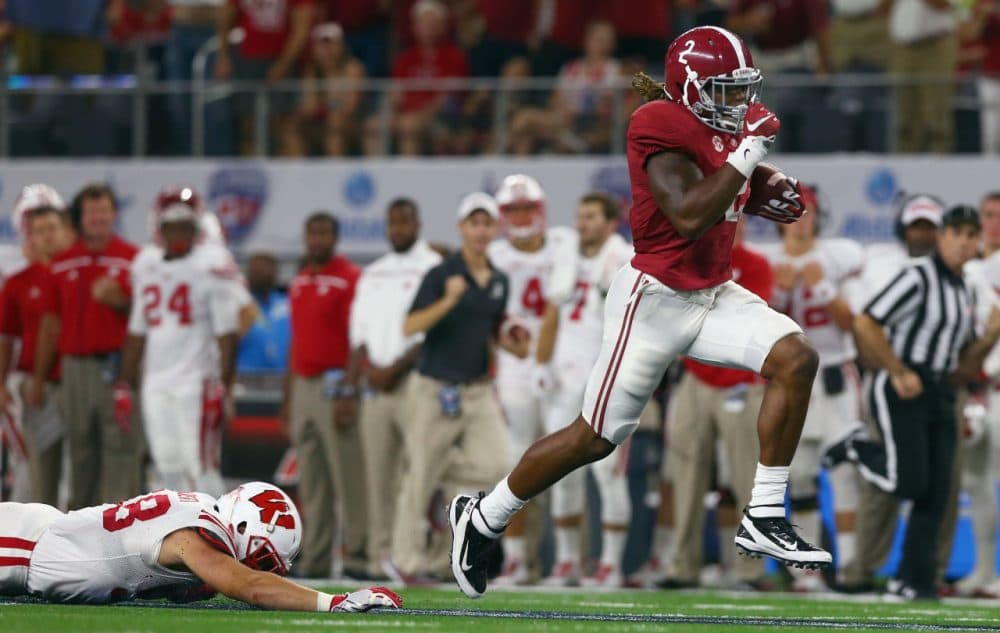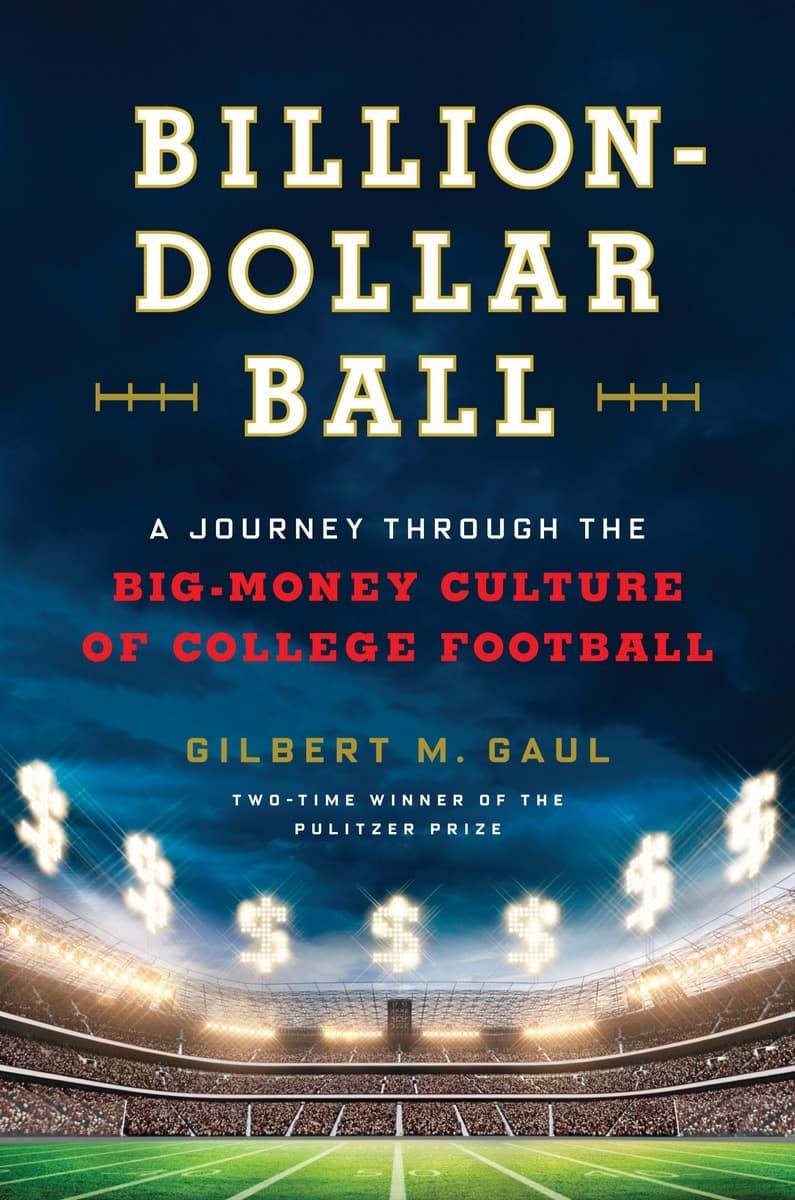Advertisement
'Billion-Dollar Ball' Exposes College Football's Big-Money Culture

It’s well-known that universities which are home to the most profitable college football teams often depend on those teams to subsidize much of the rest of the athletic program.
But it may surprise even the most passionate fans that those teams operate as profit centers separate from the schools they represent. Gilbert Gaul, the author of "Billion-Dollar Ball: A Journey Through the Big-Money Culture of College Football," joined Bill Littlefield.
Highlights From Bill's Conversation With Gilbert Gaul
BL: I’d like to start with you helping us understand why the programs at the universities most committed to football are so expensive. Alabama for example, spends more than $40 million on its program. That's more than double what it spent in 2007 when head coach Nick Saban arrived.
GG: It's just very expensive. The amount of money going to head coach salaries in college football at the elite level is just extraordinary. Saban again, not to pick on him or Alabama: $7.1 million in 2014. The top 10 coaches in college football at elite schools are averaging about $5 million in salary a year. And then, of course, they have nine full-time assistants, and their salaries have all gone through the roof as well. Then you have the spending on facilities, you have all of the back-office operations, which have grown, the number of employees in athletic departments. So, it's one thing after another.

BL: You mention facilities — not only stadiums and weight rooms but academic support programs. Tell us about the one at the University of Oregon.
GG: These things, the academic support programs, are relatively recent phenomena — by that I mean within the last couple of decades. Instead of just, you know, maybe a tutor or two, you have this incredible and elaborate and really expensive operation with maybe 100 tutors, with academic advisers, with psychologists, with life-skill coaches. And, at Oregon, this center, this $42 million center, is incredibly lavish. I went to visit it, spent a day there. It looks like a museum of modern art. There's a gas-lit fire — seriously, there's a fire pit in the lobby. It's the most extraordinary thing you've ever seen. It's exclusive to the athletes other than a coffee bar on the first floor.
And so then I went and looked at the honors college at Oregon. The building is a 77-year-old building built during the WPA in the Great Depression. The elevator didn't work. There was no interior staircase to get up to the second floor. They had one-and-a-half classroom buildings that they could use for the students.
Advertisement
BL: You compare what has been described as the college football “arms race” to the housing bubble or the dot-com bubble, both of which, of course, eventually burst. Tell us a little bit about this “arms race” and whether you think the ever-more-expensive enterprise of college football will eventually burst?
I mean, we've begun to see some indications where students are leaving games at halftime or they're not showing up at games, so I think, you know, looking down a decade or so out, I think there are a few signs that — it's not going to collapse, but this kind of monster we see as college football now, you know, it may be not be quite as big.
Bill's Thoughts On 'Billion-Dollar Ball'
Some delights from "Billion-Dollar Ball:"
DeLoss Dodds, former Athletic Director, University of Texas: “Today, four seats on the 50-yard line, you pay about $20,000 to get those seats.”
[sidebar title="An Excerpt From 'Billion-Dollar Ball'" align="right"] Read an excerpt from "Billion-Dollar Ball" by Gilbert Gaul.[/sidebar]Gilbert Gaul, author of "Billion-Dollar Ball:" “If students stopped coming to the games, well, they [the athletics directors] would figure out a way to charge them for watching on their smartphones.”
Eighty-six-year-old Penn State fan regarding a letter from the athletic department there: “It has something to do with my football tickets. They want to charge me a lot of money to trade them in.”
Gaul: “How could you charge someone hundreds of thousands of dollars to secure a seat at a football game and then call it a charitable gift?”
In 2013, the Knight Commission, which was studying intercollegiate athletics, pointed out that Auburn University was spending the equivalent of $14,000 on each student, and about $400,000 on each football player.
Conversation between Mary Willingham, a tutor at the University of North Carolina, and an athlete who’d come to her for help, because he was unable to read:
Willingham: “How are you going to get by?”
Student athlete: “You’re going to read to me.”
Each of those glimpses into the world of big-time college football comes from "Billion-Dollar Ball." If they intrigue you, read the book.
This segment aired on September 12, 2015.
